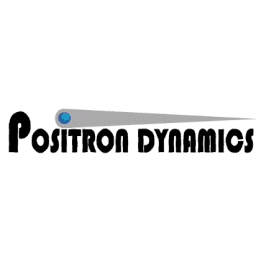Part 1 of 2 Parts
Interstellar travel is only something humanity has achieved in science fiction such as Star Trek's USS Enterprise, which used antimatter engines to travel between star systems. However, antimatter isn't just a sci-fi trope. Antimatter actually does exist.
Elon Musk has called antimatter engines “the ticket for interstellar journeys,” and physicists like Ryan Weed are now exploring how to harness it.
Antimatter is composed of particles like regular matter but with opposite electric charge. When antimatter contacts regular matter, they both annihilate and produce enormous amounts of energy. Weed said that “Annihilation of antimatter and matter converts mass directly into energy,” according to the famous equations E=MC2
Ryan Weed is cofounder and CEO of Positron Dynamics (PD). It is a company working to develop an antimatter propulsion system. He said that just one gram of antimatter could generate an explosion equivalent to a nuclear bomb. All that energy can be used to either accelerate or decelerate spacecraft at high velocity.
Our nearest stellar neighbor is Proxima Centauri. It is about four light years away. An antimatter engine could theoretically accelerate a spacecraft at 1 g (thirty-two feet per second squared). This could get us to Proxima in just five years, Weed said in 2016. That's eight thousand times faster than it would take Voyager 1 to travel about half the distance, according to NASA.
Even within our own solar system, an antimatter-powered spacecraft could reach Pluto in three and a half weeks compared to the nine and a half years it took NASA's New Horizons probe to arrive, Weed said.
The main reason we don't have antimatter engines, despite their tremendous capabilities, is a matter of cost not technology. Gerald Jackson is an accelerator physicist who worked on antimatter projects at Fermilab. He told Forbes in 2016 that with enough funding, we could have an antimatter spacecraft prototype within a decade.
The basic technology is already available. Physicists equipped with the world's most powerful particle accelerators have made antiprotons and antihydrogen atoms.
The problem is that this type of antimatter is incredibly expensive to make. It's said to be the most expensive substance on Earth. Jackson gave an estimate of just how much an antimatter machine would cost to build and maintain.
Jackson is the founder, president, and CEO of Hbar Technologies. His company is working on a concept for an antimatter space sail to decelerate spacecraft traveling at one to ten percent the speed of light. This would be a useful design for entering into orbit around a distant star, planet, or moon.
Jackson said he has designed an asymmetric proton collider that could produce three quarters of an ounce of antimatter per year.
Jackson added that “For a twenty-two-pound scientific package traveling at two percent of the speed of light, one and a quarter ounce of antimatter is needed to decelerate the spacecraft down and inject it into orbit around Proxima Centauri.”
He said it would take eight billion dollars to construct a solar power plant for the enormous energy needs of antimatter production and cost six hundred and seventy-million dollars per year to operate. “There is currently no serious funding for advanced space propulsion concepts,” Jackson said.
Please read Part 2 next
